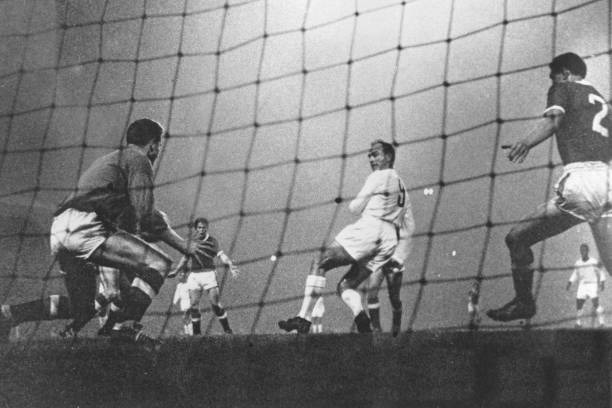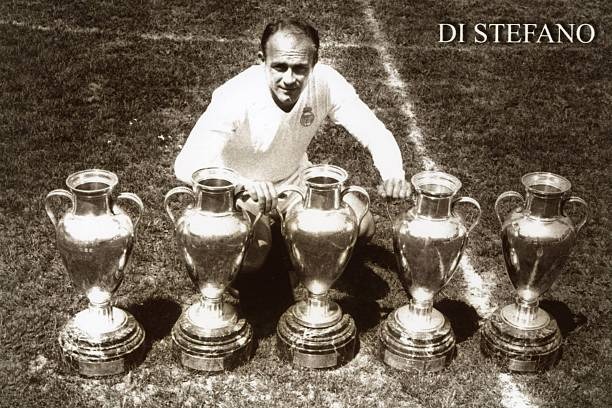Introduction
Alfredo Di Stéfano, often hailed as football’s first “complete player,” transformed the sport with his intelligence, versatility, and unmatched work ethic. From leading Real Madrid to five consecutive European Cups to inspiring modern icons like Cristiano Ronaldo, his legacy is timeless. This article unpacks his career, the stadium bearing his name, and why experts call him the “godfather of total football.”
1. Estadio Alfredo Di Stéfano: Where Legends Are Forged
Inaugurated in 2006, the Estadio Alfredo Di Stéfano is more than just a training ground—it’s a symbol of Real Madrid’s commitment to nurturing future stars. Located within Ciudad Real Madrid, the 6,000-seat venue hosts Castilla matches and serves as a proving ground for talents like Vinícius Jr. and Fede Valverde.
Why It Matters:
- Focus on Development: Unlike the Bernabéu, this stadium prioritizes youth growth, mirroring Di Stéfano’s own mentorship.
- Historical Touchstone: The 2014 renaming honored Di Stéfano’s death, linking his legacy to Madrid’s future.
2. Alfredo Di Stéfano Stadium: A Blueprint for Success
While modest in size, the stadium’s design emphasizes functionality over grandeur. Its pitch replicates the Bernabéu’s dimensions, ensuring seamless transitions for rising stars. According to Marca, over 80% of Real Madrid’s first-team players since 2010 trained here, proving its role as a talent incubator.
3. Alfredo Di Stéfano Goals: Redefining the Striker’s Role
Di Stéfano’s 418 goals for Real Madrid only scratch the surface. He revolutionized the “false nine” role, dropping deep to orchestrate play while scoring relentlessly.
By the Numbers:
- European Cup Dominance: 49 goals in 58 games, including a 1960 final hat-trick.
- Clásico Heroics: 18 goals against Barcelona, a record until Messi surpassed it.
Expert Insight:
“Di Stéfano wasn’t just a scorer—he was a strategist,” notes FourFourTwo historian David Cartlidge. “He set the template for players like Johan Cruyff.”
4. Alfredo Di Stéfano Dates Joined: A Journey Spanning Continents
Di Stéfano’s career was a globe-trotting saga rare in the 1950s:
- River Plate (1945–1949): Won two Argentine titles, showcasing his precocious talent.
- Millonarios (1949–1953): Became a Colombian league icon, drawing Madrid’s scouts.
- Real Madrid (1953–1964): Joined after a controversial tug-of-war with Barcelona, reshaping football history.
Did You Know? FIFA intervened in his transfer, splitting his rights between Madrid and Barça before Madrid secured him fully.
5. Alfredo Di Stéfano Cause of Death: The Day Football Stood Still
Di Stéfano died on July 7, 2014, at 88, after suffering cardiac arrest. His health had declined since a 2005 heart attack. Real Madrid retired his #12 jersey temporarily, and thousands gathered at the Bernabéu to pay tribute, as reported by BBC Sport.
6. Alfredo Di Stéfano Trophies: The Silverware Collection
His trophy haul mirrors Madrid’s golden age:
- European Cup: 5 straight titles (1956–1960), a record unmatched until 2022.
- La Liga: 8 championships, including five in a row (1961–1965).
- Ballon d’Or: Won back-to-back in 1957 and 1959.
Unique Angle: Di Stéfano’s 1960 European Cup final performance (3 goals, 2 assists) earned a standing ovation from Frankfurt fans—a rare feat for an opponent.

7. Alfredo Di Stéfano National Team: A World Cup Dream Deferred
Despite eligibility for Argentina, Colombia, and Spain, Di Stéfano never graced a World Cup:
- Argentina: Withdrew from the 1950 Cup due to political disputes.
- Spain: Debuted at 31 but failed to qualify for the 1962 tournament.
Legacy Note: His 23 goals in 31 games for Spain still rank among the nation’s best ratios.
FAQs
Q: How did Di Stéfano influence modern football?
A: He pioneered the box-to-box forward role, blending defense and attack—a model for midfielders like Zinedine Zidane.
Q: Why is the Estadio Alfredo Di Stéfano smaller than the Bernabéu?
A: It’s designed for youth development, not commercial events, keeping the focus on training.
Q: What awards did Di Stéfano win post-retirement?
A: FIFA’s “Player of the Century” runner-up (2000) and UEFA President’s Award (2007).
Conclusion
Alfredo Di Stéfano’s genius lies not just in stats but in his vision—literally and metaphorically. From the Estadio Alfredo Di Stéfano to his tactical innovations, he remains football’s eternal polymath. As Pep Guardiola once said, “He was 50 years ahead of his time.”
Sources: FIFA Archives, Real Madrid Official Site, BBC Sport, FourFourTwo.



